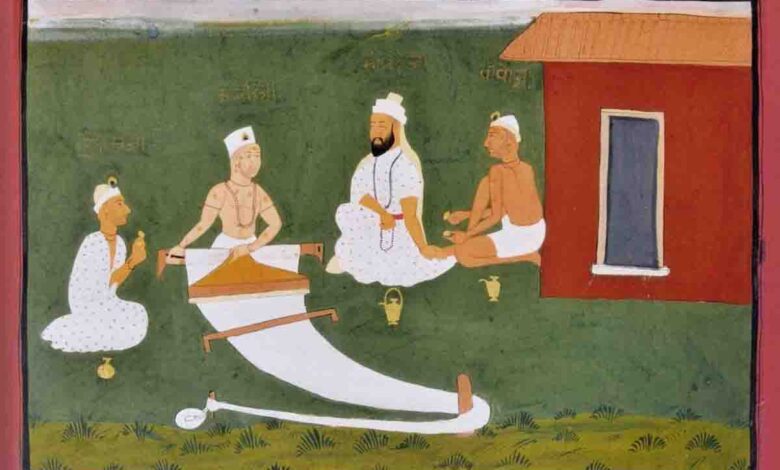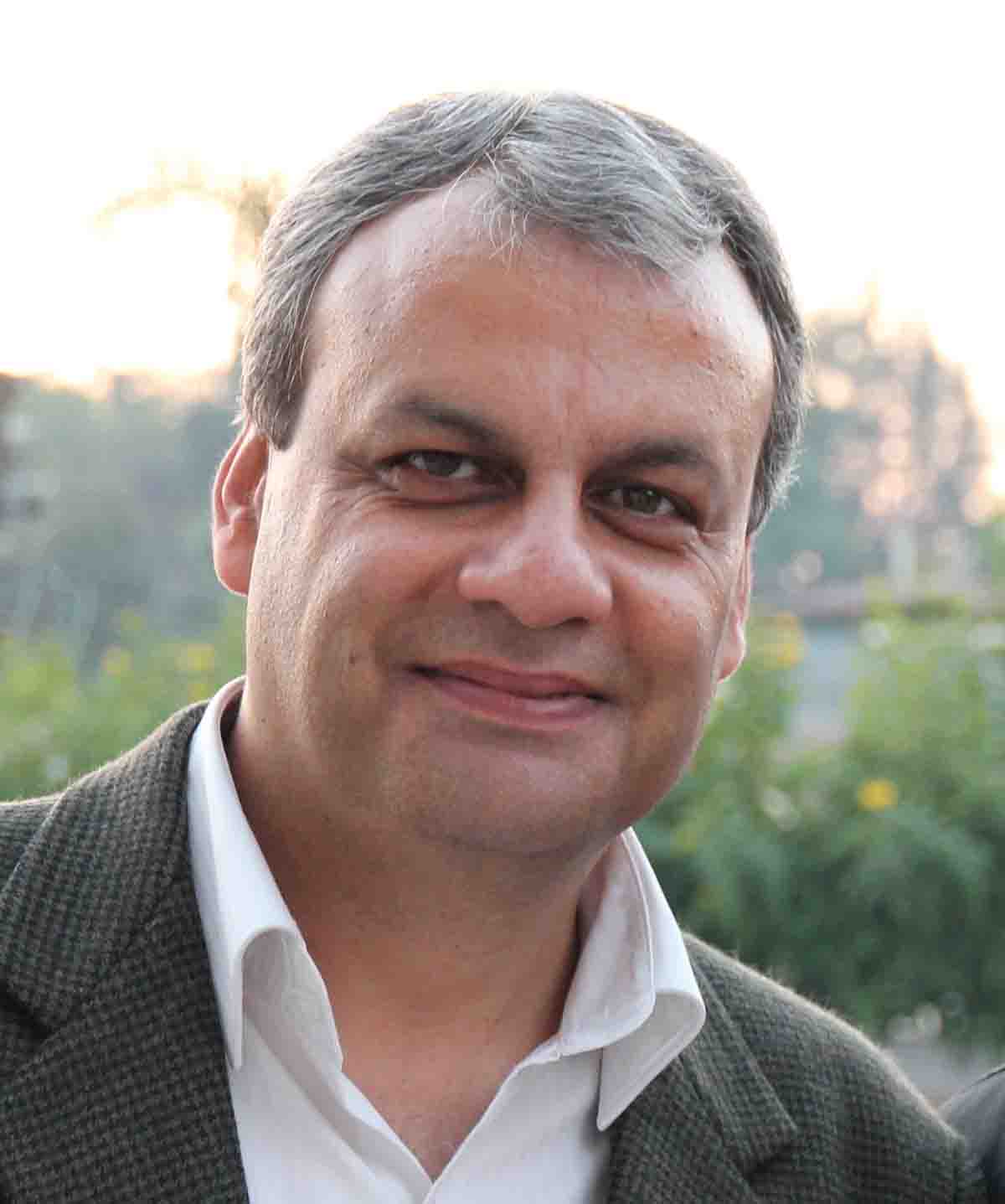A Yatra for Kabir

Monday, 20 February 2023 | Lokesh Ohri | in Guest Column
Hillbilly
 Lokesh Ohri
Lokesh Ohri
It may not be incorrect to describe India as a land of yatras. A yatra, in the context we are referring to here, are difficult journeys across vast landscapes that seek mass mobilisation. Wandering in search of truth has been the universal metaphor that sets the narrative for such journeys. In the Aitareya Brahmana, god Indra, the protector of travellers, exhorts a young Rohita to embark on one, by saying, “The feet of the wanderer are like the flower, his soul is growing and reaping the fruit; and all his sins are destroyed by his fatigues in wandering. Therefore, wander!”
Wandering, therefore, has been at the heart of pilgrimage, of coming to terms with your own past actions, while also giving a call to action to others. Invented long ago in India’s religiousand political landscape as digvijaya, yatras have moved on from being strategies for imperialist expansion in ancient times, to proselytising missions of Hindu renunciant traditions of late medieval India, to their present avatar as political mobilisations, serving purposes both divisive as well as integrative.
Yatras may be in vogue today, but this piece is about a different yatra altogether, a journey of self-discovery of sorts, that celebrates the 15th century mystic poet Kabir. The Rajasthan Kabir Yatra, organised by Bikaner based Lokayan, weaves its way every year through different regions of Rajasthan. Jocularly referred to as yatna, or torture, owing to absence of material comforts for travellers as well as the celebrated artistes that join it, this yatra winds its way from one village to another still acting as a magnet for exponents and seekers of Kabir.
A few months ago, I joined the Rajasthan Kabir Yatra, with more than four hundred people from different walks of life, and from various corners of India, to traverse the lush countryside of Mewar. Mewar borders the densely forested region of Gujarat where the Sabarmati river originates. Here, forest greens mingle with crystal clear streams with views to sweep you off your feet, the sights even more overwhelming when you are in a part of India where you expect to experience only desertscapes.
In a forest like this, why would one seek Kabir? Though little is known of the life of Kabir, it is believed he was born in or near Benares. He grew up in a family of Muslim weavers before becoming a disciple of the Hindu ascetic Ramananda. Kabir is considered both a Sufi and a Bhakti saint. Though Kabir may have never travelled to regions like Mewar, through which we travelled in this instance, or even Marwarand Malwa, yet his poetry and philosophy has taken firm roots in the soil of these regions.Most villages have their own Kabir mandalis or performing groups, that often come together in satsang, celebrating Kabir’s message of non-duality. That Kabir is still sung and performed by rockstar and street beggar alike, reflects his relevance.
To begin with, I was quite intrigued by the involvement of the Rajasthan Police in the yatra since 2016, who support it through their unique project calledTaana-Baana. The purpose, according to them, is to spread the message of peace and communal harmony through the iconoclastic poetry of Kabir. And the moment the Yatra progressed from its rock concert feel by the Fatehsagar Lake in Udaipur towards the rustic settings of Kotda, one realised that our country could do with more such initiatives. People met, talked about equality, love and peace. But to get the real import of what the yatra was setting out to achieve, one would have to know about Kotda, and its complex communal situation.
Kotda is a small cantonment town at the border of Rajasthan and Gujarat, established by the British in times when their forces moved regularly between the centre of India and Gujarat. Bhils and Kharasi, are the indigenous people of the region, who would often attack British detachments passing through the dense forests. The cantonment of Kotda was thereforeestablished to offer a safe haven with the objective having been achieved through the settling-in of soldiery from around Delhi, predominantly from the Muslim community. Over the years, this has made the population equation quite even, with the Hindu, Muslim and Adivasi living in the region in almost equal numbers. Because the town was established by the British, missionaries soon moved in to “work” amongst the indigenous forest-dwellers. What has fuelled the communal tensions in the recent past is the region’s physical proximity to Gujarat, with Hindu right-wing organisations coming in from the state, attempting to capture the ground lost to the missionaries, fuelling tensions on pretexts like love-jehad and land disputes. What has problematised the situation even more is a tribal resurgence, with the Bhils now being exhorted by some politicians to appropriate Rana Punja, a symbol of Rajput pride, who fought with Maharana Pratap against the Mughals in the 15th century. Though previously accepted as a Solanki Rajput, this sudden appropriation by the Bhils is leading to frequent contestations and an identity crisis, with conflict between the Rajputs and the Bhils bearing ominous portents for social accord.
It is against this backdrop of communal tension that we began our journey. At Udaipur, I was met by Professor Kiran Hiremath and his team of Sociology and Anthropology researchers from IIT, Jodhpur, who had come here to fathom the yatra’s impact in dousing communal fires. We travelled together to village Kotda and discussed the situation threadbare. We arrived at the village and were put up at the home of a retired Muslim school teacher. Our gracious host took us around, and from his window we had a bird’s eye view of the ground where the yatra was to halt. Preparations were afoot, notwithstanding the fact that a temple courtyard close by had already turned on their blaring music in preparation of the garba. One could see people from different communities and classes busying themselves in finalising the organisational details.
Soon, Kabir Mandalis from nearby villages began to arrive, as did musicians who have today come to epitomise the renditions of Kabir and other Bhakti saints. From the rocking band Kabir Café to a more academic Shabnam Virmani, from KaluramBamaniya to the Saraiki singer Mir Basu Barkat Khan, they were all there, along with a large crowd. One could sense the presence and participation of all communities, whose representatives had earlier come together to organise the massive event. Requesting locals to host the yatris, the travellers as they are generally referred to, allowed people to vent their feelings, and come closer. People we met told us that the sheer onus of organising such a large event, had forced them to work together. The message that pervaded was one of inclusivity, leading to the creation of a space where there was enough room for dialogue. Only a yatra of this magnitude could have catalysed such processes.
In Kotda, while interviewing people in their homes, we came across a lady (who declined to give her name) who had, to our utter disbelief, come to this hamlet all the way from Arunachal Pradesh. Her husband belonged to Kotda and the two had decided to marry while he was posted out as a school teacher, to her state in the far North-East of India. Speaking demurely from behind a veil, covering her face in keeping with the custom of her adopted village, she held the opinion that such events would expose people, especially women, to new trends such as the fact that even women can perform on stage. “While I could sing and dance with abandon in my own village, and would love to do the same here, there are restrictions on women here.”
When I mentioned to her that Sumitra Das Goswami, well-known Mirabai singer from Jalore in Rajasthan was going to perform for the Yatra that evening, she was filled with awe. I had to mention that Goswami herself had to overcome several social stigmas, and could only do so with unstinted support from her husband. She appeared livid at the thought of what a fellow woman would have gone through to earn this right. Even as the evening wore on, and artiste after artiste rendered their repertoire, I observed a group of women seated in a dark corner keenly observing the performances. The moment Sumitra Das Goswami ascended the stage, one of them broke into an impromptu dance. The elderly amongst the group initially looked quizzically at each other, as if questioning her immodesty. But soon the earthy rhythms of the magical evening took over, even as the one dancing in gay abandon began to involve young ones in her jiving. Was it our lady from Arunachal, or someone else? Difficult to say, but in that one moment of the shedding of inhibitions, perhaps all of Kabir’s teachings came alive for me. Just as the dew drop was disappearing into the ocean, the ocean of Kabir lovers from everywhere was merging into this dancing dew drop.
As Indra would have would have mentioned to Rohita, “The fortune of him who is sitting, sits; it rises when he rises; it sleeps when he sleeps; it moves when he moves. Therefore, wander!”or perhaps “wander with Kabir!”
(The author is an anthropologist, walker and writer. Views expressed are personal)






